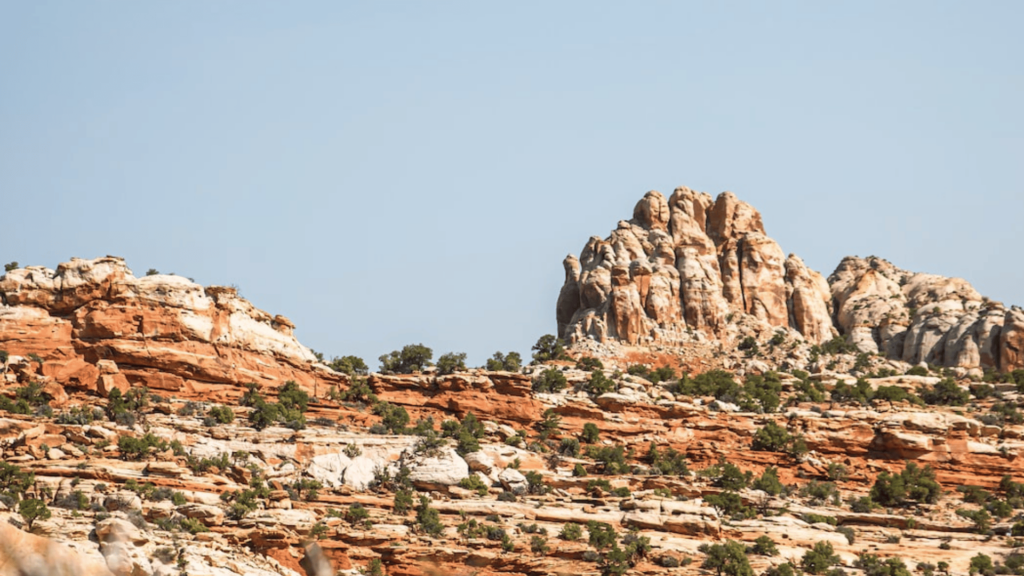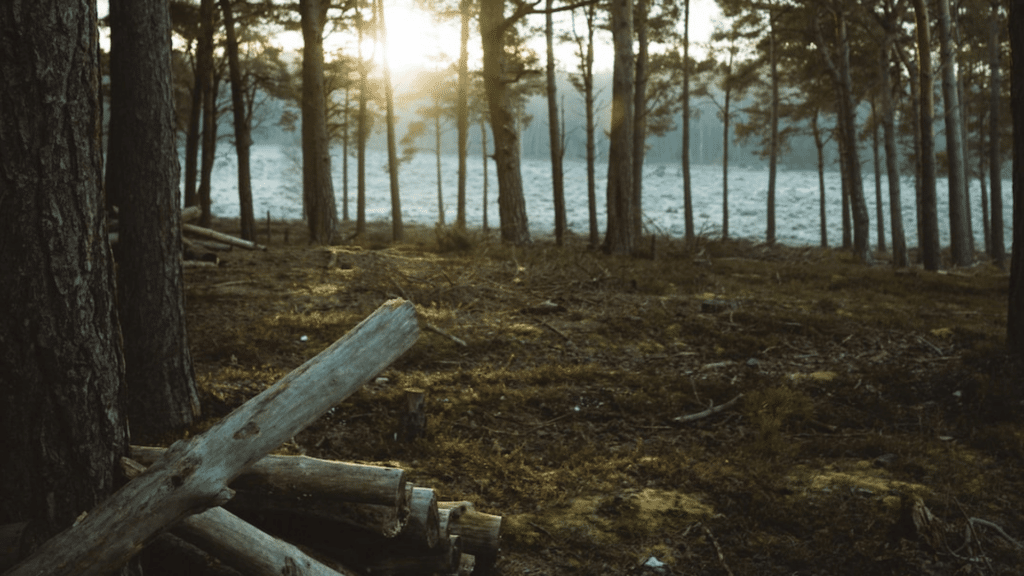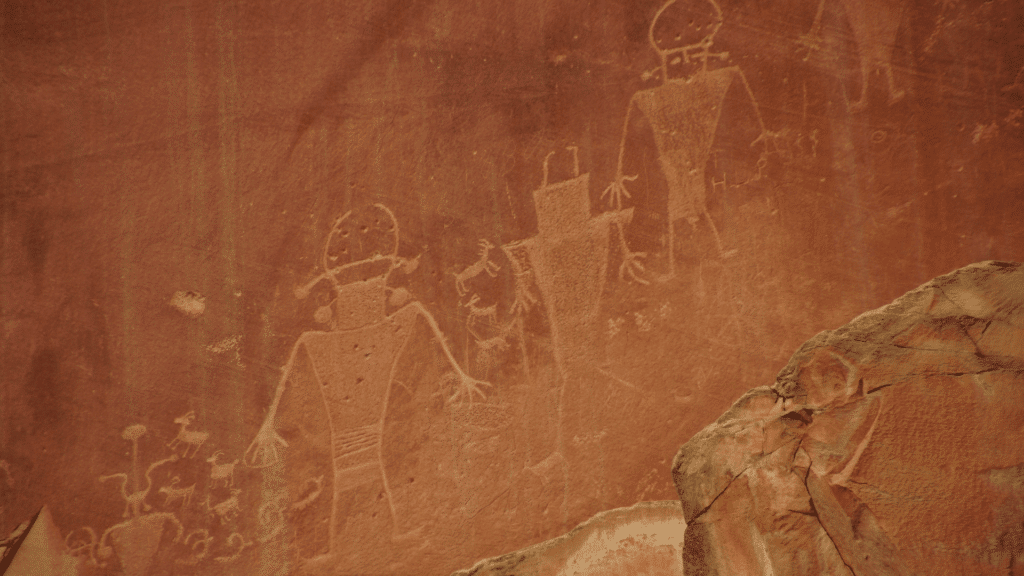Utah is famous for its stunning national parks. Some examples include Zion with its red rocks, and Bryce Canyon with its unique landscapes.
But in the heart of the state lies a hidden gem that often gets overlooked: Capitol Reef National Park.
Why Visit Capitol Reef National Park?
Unique Geology and Scenery

by Brynn Pedrick
Capitol Reef is a geological wonder, with towering cliffs, colorful canyons, and unique rock formations. The park is home to the Waterpocket Fold, a 100-mile long wrinkle in the earth’s crust that creates a stunning landscape of cliffs, domes, and canyons.
One of the most iconic features of the park is Cassidy Arch Capitol Reef, a natural arch that spans 300 feet and offers breathtaking views of the surrounding landscape. The arch is named after the infamous outlaw Butch Cassidy, who is said to have used the area as a hideout.
Rich History and Culture
In addition to its stunning scenery, Capitol Reef is also rich in history and culture. The park is home to over 2,000 petroglyphs, ancient rock carvings created by the Fremont people over 1,000 years ago. These capitol reef petroglyphs offer a glimpse into the lives and beliefs of the Native Americans who once inhabited the area.
The park is also home to the Fruita Historic District, a preserved Mormon settlement that dates back to the late 1800s. Visitors can explore the historic buildings, orchards, and gardens, and even pick and eat fruit from the trees.
Outdoor Activities

Capitol Reef offers a wide range of outdoor activities for visitors to enjoy. Hiking is a popular activity, with trails ranging from easy strolls to challenging hikes through the park’s rugged terrain. Some of the most popular hikes include the Hickman Bridge Trail, the Grand Wash Trail, and the Capitol Gorge Trail.
For those looking for a more adventurous experience, the park also offers opportunities for rock climbing, canyoneering, and horseback riding. And with over 200 miles of backcountry roads, Capitol Reef is a great destination for off-roading and scenic drives.
How to Get There
Capitol Reef National Park is located in south-central Utah, about 2.5 hours from Salt Lake City and 4 hours from Las Vegas. The closest major airport is in Salt Lake City, but there are also smaller airports in nearby towns such as Moab and St. George.
If you’re driving, the park is easily accessible from Highway 24, which runs through the park. There are also shuttle services available from nearby towns for those without a car.
Where to Stay

by Tirza van Dijk
Capitol Reef offers a variety of camping options for visitors, from primitive campsites to RV sites with full hookups. The Fruita Campground is the only campground within the park and offers 71 sites on a first-come, first-served basis.
For those looking for a more luxurious experience, there are also several hotels and lodges located just outside the park. These include the Capitol Reef Resort, the Red Sands Hotel, and the Broken Spur Inn.
Best Time to Visit
The best time to visit Capitol Reef National Park is in the spring or fall when the weather is mild and the crowds are smaller. Summer can be hot and crowded, while winter brings cold temperatures and occasional snow.
If you’re planning to visit in the summer, be sure to bring plenty of water and sunscreen, as temperatures can reach over 100 degrees Fahrenheit. And if you’re visiting in the winter, be prepared for snow and icy conditions on the roads and trails.
Tips for Visiting
- Be sure to bring plenty of water and sunscreen, especially if visiting in the summer.
- Check the weather and road conditions before your visit, as the park can experience flash floods and road closures.
- Respect the park’s natural and cultural resources by staying on designated trails and not disturbing any petroglyphs or other historic sites.
- Be aware of wildlife, including rattlesnakes and mountain lions, and take precautions to stay safe.
- Pack layers of clothing, as temperatures can vary greatly throughout the day.
Exploring the Park
Scenic Drives

by Annie Spratt
One of the best ways to explore Capitol Reef is by taking a scenic drive through the park. The 25-mile long Scenic Drive offers stunning views of the park’s most iconic features, including the Waterpocket Fold, Capitol Dome, and Grand Wash.
For a more off-the-beaten-path experience, take the Cathedral Valley Loop, a 60-mile dirt road that takes you through the remote and rugged northern section of the park.
Hiking
As mentioned earlier, hiking is a popular activity in Capitol Reef National Park. With over 15 trails ranging from easy to strenuous, there’s something for every level of hiker.
One of the most popular hikes is the Hickman Bridge Trail, a 2-mile round trip hike that takes you to a natural bridge spanning 133 feet. The trail is relatively easy and offers stunning views of the surrounding cliffs and canyons.
For a more challenging hike, try the Navajo Knobs Trail, a 9-mile round trip hike that takes you to the highest point in the park at 6,800 feet. The trail offers breathtaking views of the Waterpocket Fold and the surrounding landscape.
Petroglyphs

No visit to Capitol Reef is complete without seeing the park’s ancient petroglyphs. The most accessible petroglyphs can be found along the Petroglyph Panel Trail, a short 0.3-mile hike that takes you to a large panel of rock carvings.
For a more remote and challenging experience, try the Halls Creek Narrows Trail, a 6-mile round trip hike that takes you to a secluded canyon with over 100 petroglyphs.
Conclusion
Capitol Reef National Park may not be as well-known as some of Utah’s other national parks, but it offers a unique and unforgettable experience for visitors. With its stunning scenery, rich history and culture, and a wide range of outdoor activities, it’s a must-visit destination for anyone looking to explore the beauty of Utah. So next time you’re planning a trip to the Beehive State, be sure to add Capitol Reef to your itinerary.





